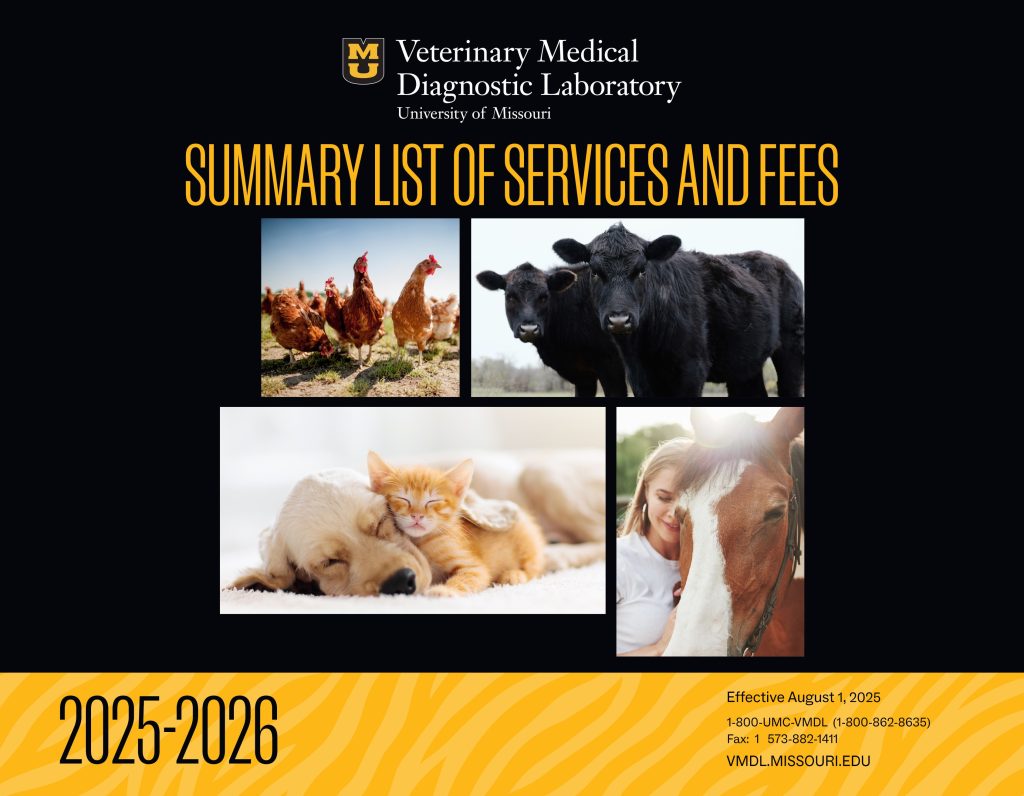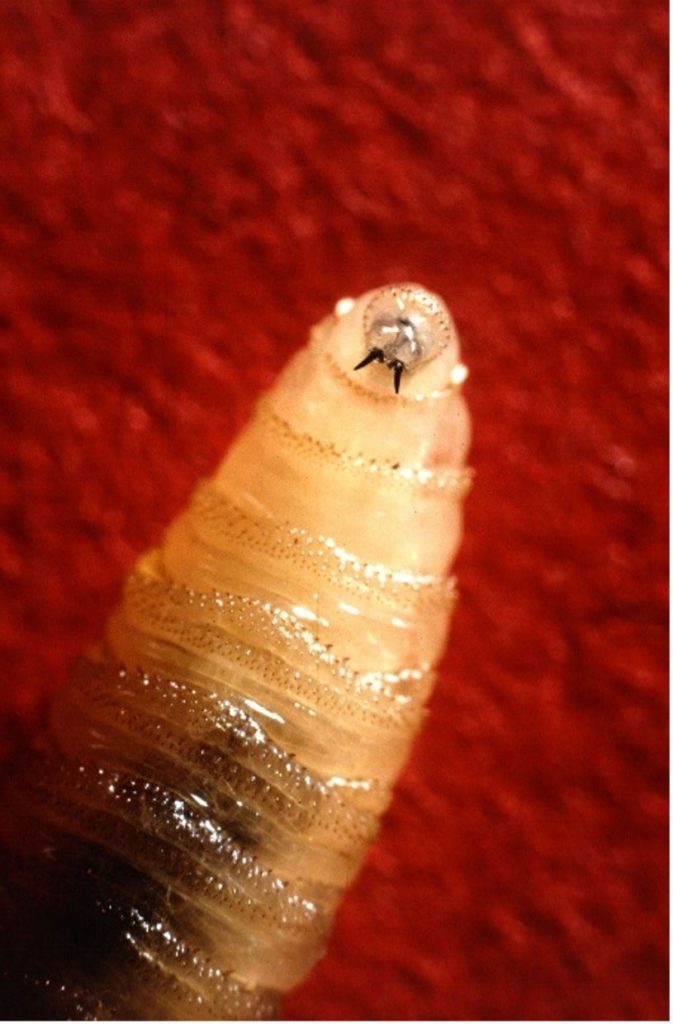

Coming soon: 2025-26 VMDL fee guide
An updated list of our services and fees is coming soon! Keep an eye out and be ready to update your system with our new prices, which are effective Sept. 1, 2025.
New service offerings include:
- Small animal diarrhea panel for feces or tissues (Anatomic Pathology)
- Small animal respiratory panel (Anatomic Pathology)
- Mastitis milk culture (Bacteriology)
- Small ruminant health panel — CAE/OPP, Johne’s, CL (Serology)
- Caseous Lymphadentitis (CL) antibody ELISA (Serology)
The following tests have been temporarily discontinued:
- Electron microscopy (Virology)

Drop-off location update
Our Anatomic Pathology and Receiving sections have moved into the new VMDL Phase I facility. To drop off a sample during business hours, please proceed to the south side of the new building and look for the below entrance. A few client parking spaces are available nearby for your convenience.
Never fear, our shipping addresses have not changed.
If you’re using the US Postal Service, ship to:
Mizzou VMDL
P.O. Box 6023
Columbia, MO 65205
If you’re using FedEx*/UPS/DHL, ship to:
Mizzou VMDL
901 East Campus Loop
Columbia, MO 65211
*Please note, our pre-printed billable stamps display a different address. We pick up so you save on shipping.
For after-hours sample drop off, the refrigerator in the Small Animal Lobby of the Veterinary Health Center (Clydesdale Hall) is still available for your use 24/7. After hours drop off of deceased animals for necropsy can be arranged by calling the on-call student at 573-864-7160.

The re-emerging threat of New World Screwworm
For more than 20 years, the biological barrier of the New World Screwworm has been maintained in the Darien Gap region of Panama with sterile fly releases from the COPEG facility. In 2023, the cases of New World Screwworm in Panama increased 250 times over, and the pest began migrating northward. The first case in Mexico was detected in November 2024, and, in early July 2025, a new case was confirmed about 370 miles south of the U.S. border. In May 2025, the U.S. border was closed to Mexican cattle, bison and horses.
The larval stage of the New World Screwworm hatches and feeds on live tissue after the adult female fly lays her eggs near a wound or orifice. All warm-blooded vertebrates including humans and companion animals can be affected, but more than 80% of cases in the current outbreak have occurred in cattle. Cattle with wounds from husbandry procedures such as dehorning, castrating and branding are particularly at risk. Infestation results in devastating deepening wounds and secondary infections and has a near 100% mortality at 14 days if left untreated.
New World Screwworm
Photo courtesy of USDA
Any suspected cases of New World Screwworm myiasis should be reported immediately to your state animal health official and the USDA area veterinarian in charge. Sterile fly release has been diverted to Mexico and sterile fly production is ramping up with new production and dispersal facilities in Metapa, Mexico and Texas. For more information on New World Screwworm and the current situation, please visit the USDA-APHIS website at https://www.aphis.usda.gov/livestock-poultry-disease/cattle/ticks/screwworm.
